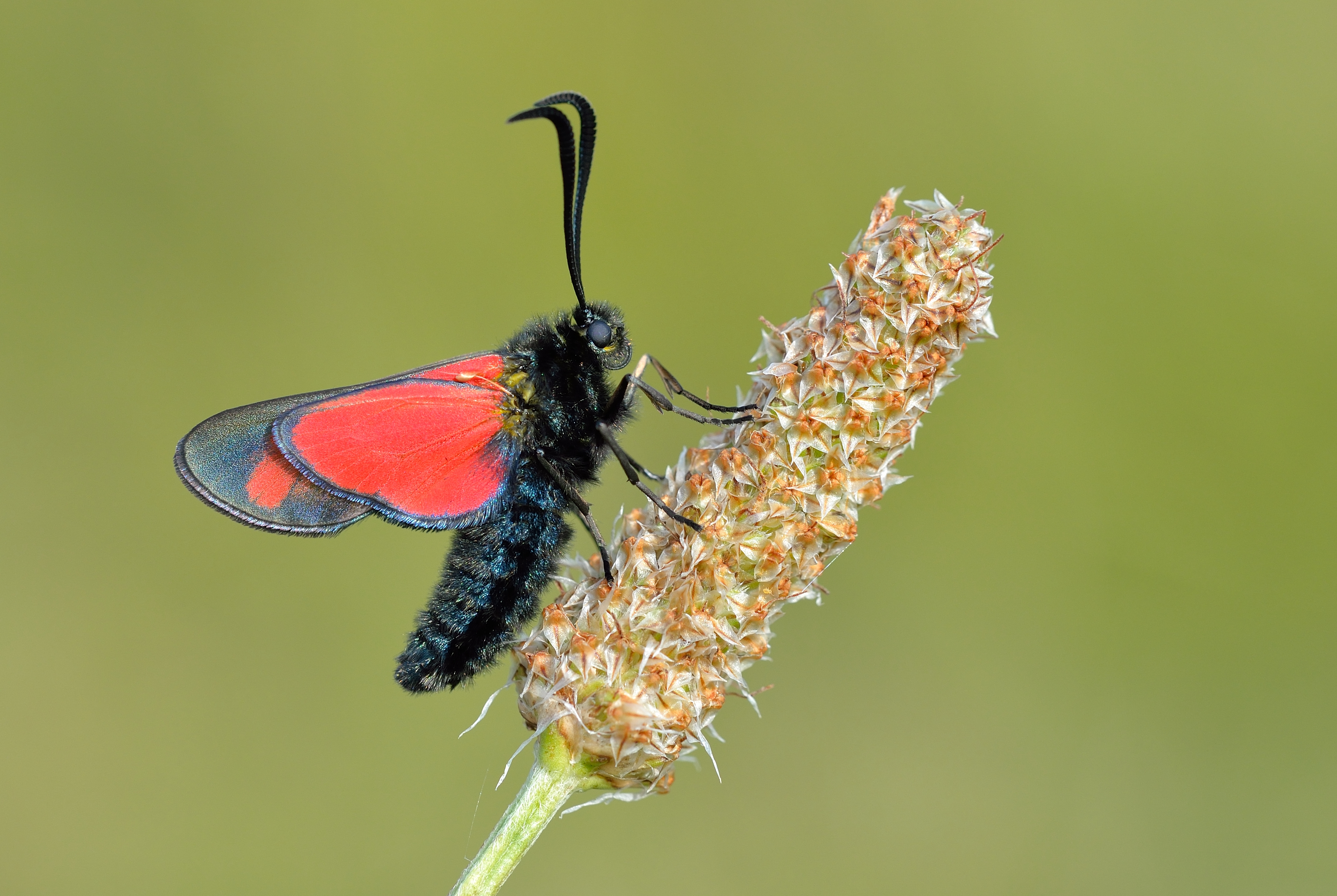I’m in the mood for Moth Night having encountered several different moths in the garden recently. At dusk groups of Silver Y have been busily nectaring on the Perennial Wallflower Erysimum ‘Bowles Mauve’ and the Red and White Valerian. A torchlight patrol around the garden a little later - around 11pm - revealed a Large Yellow Underwing also on the Erysimum.
Some day-flying moths have been spotted too. A Six-spot Burnet spent all afternoon nectaring on just one Chive flower. Tiny Mint Moths are fluttering around on most days. Mint Moths belong to the Crambidae family (one of two families in the Pyraloidea) and this group of micro-moths is the focus of Moth Night this year, which runs from 14 to 16 June. However, Moth Night is a general celebration of moths and there are many species on the wing in June that you could try to spot.
Last month’s Plots for Pollinators campaign encouraged people to set aside one square metre of their garden or outdoor space to plant a nectar-rich flowerbed or a colourful container garden for adult butterflies and moths. If you are keen to do more and need another project, then why not set aside another metre for moths and cater for their caterpillars?
Some moth caterpillars will eat a range of plants and others have very specific requirements. I have been growing potential foodplants in a group of containers in the hope that some will be used. Having seen Mint Moths around, I make sure I keep pots of Mint and Wild Marjoram, which are the foodplants for their caterpillars. You could start by observing which moths are in your garden and then look up their foodplants and see if there is something you could grow
One of my pots with Contorted Willow has in the past been given the seal of approval by impressive Puss Moth caterpillars; they munched all the leaves but the plant recovered perfectly. Willows (Salix) can also host Sallow Kitten, Poplar Hawk-moth, Herald and Red Underwing, amongst others.
My group of containers also includes Fuchsia for the Elephant Hawk-moth. The large caterpillars feed at night but they can sometimes be spotted resting on stems in the late afternoon on fine days from late June to September.
Why not grow some native plants - either in containers or a flowerbed - which can be used by adults and caterpillars. True Lover’s Knot adults take nectar from Heather flowers and can be active during sunny days and their caterpillars also feed on Heather. Double-striped Pug caterpillars are around from now until October, feeding on the flowers of many plants including Heather and Ivy.
Rivulet caterpillars feed on Red Campion flowers and seeds from July to early September.
 Foxglove Pug caterpillars can be found feeding inside Foxglove flowers, especially on the stamens, from late June to mid-August. Large Yellow Underwing caterpillars will also feed on Foxgloves along with a wide range of herbaceous plants and grasses including Marigolds and Annual Meadow-grass.
Foxglove Pug caterpillars can be found feeding inside Foxglove flowers, especially on the stamens, from late June to mid-August. Large Yellow Underwing caterpillars will also feed on Foxgloves along with a wide range of herbaceous plants and grasses including Marigolds and Annual Meadow-grass.
Sweet-scented Honeysuckle growing up the fence is an attractive night time nectar source for moths such as the Elephant Hawk-moth and is also a foodplant for the Early Grey and Twenty-plume Moth caterpillars.
It’s even possible to grow young Ash trees in a container – the roots will be constricted, which will keep them small. Ash is a foodplant for Coronet caterpillars.
Let me know what plants you are planning to include in your metre-squared for moths.
Happy Moth Night!
The Secret Gardener


